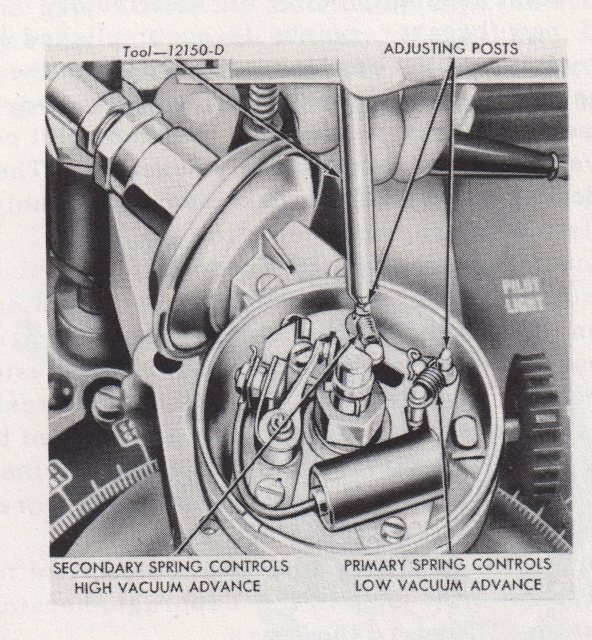Classic/Antique Car Repair: timing information 200 cid 6-cylinder 65 Mustang, electronic conversion, windshield washer
QuestionI'm looking for the timing information on a '65 200 cid 6-cylinder Mustang. I have a Motors book that provides the initial timing, but I'm looking for the centrifugal and vacuum advance. I see no change in timing with the vacuum advance connected or disconnect at various RPM's. The car has been sitting for about 10 years and the owner has replaced the points with an electronic conversion kit. I asked him to "dig up" the spec's on the conversion kit. Thanx for your help!!
Dave Hilgers
Answer
 Ford Distributor
Ford Distributor
If the inside of your distributor looks like the picture here is the answer. Of course you do not have points in yours. The reason that you cannot find specifications for the advance on this distributor is that it is a Loadamatic type distributor and works on extremely low vacuum. For that reason advance checking and setting is done on a distributor machine that will accurately measure advance with low vacuum. This vacuum advance gets it's vacuum from the Venturi part of the carburetor. Now, a couple of things. I have found more than one distributor that when replacing the points with the aftermarket unit that one of the screws holding the unit to the breaker plate was too long and went down and contacted the stationary part of the breaker locking the two together. The vacuum diaphragm could be ruptured. We used to do a simple test in the day when these cars were new. Disconnect the vacuum line from the carburetor. Slip a section of small diameter rubber vacuum or windshield washer line over the end of the vacuum line. Suck on the end on the rubber line and then cover the end of the line with your tongue. If it holds vacuum then the diaphragm is ok and if not the diaphragm is ruptured and needs to be replaced. To check to see if the vacuum advance is working then using a timing light raise the engine speed to about 2500 RPM. The timing should advance 20 to 40 degrees.
